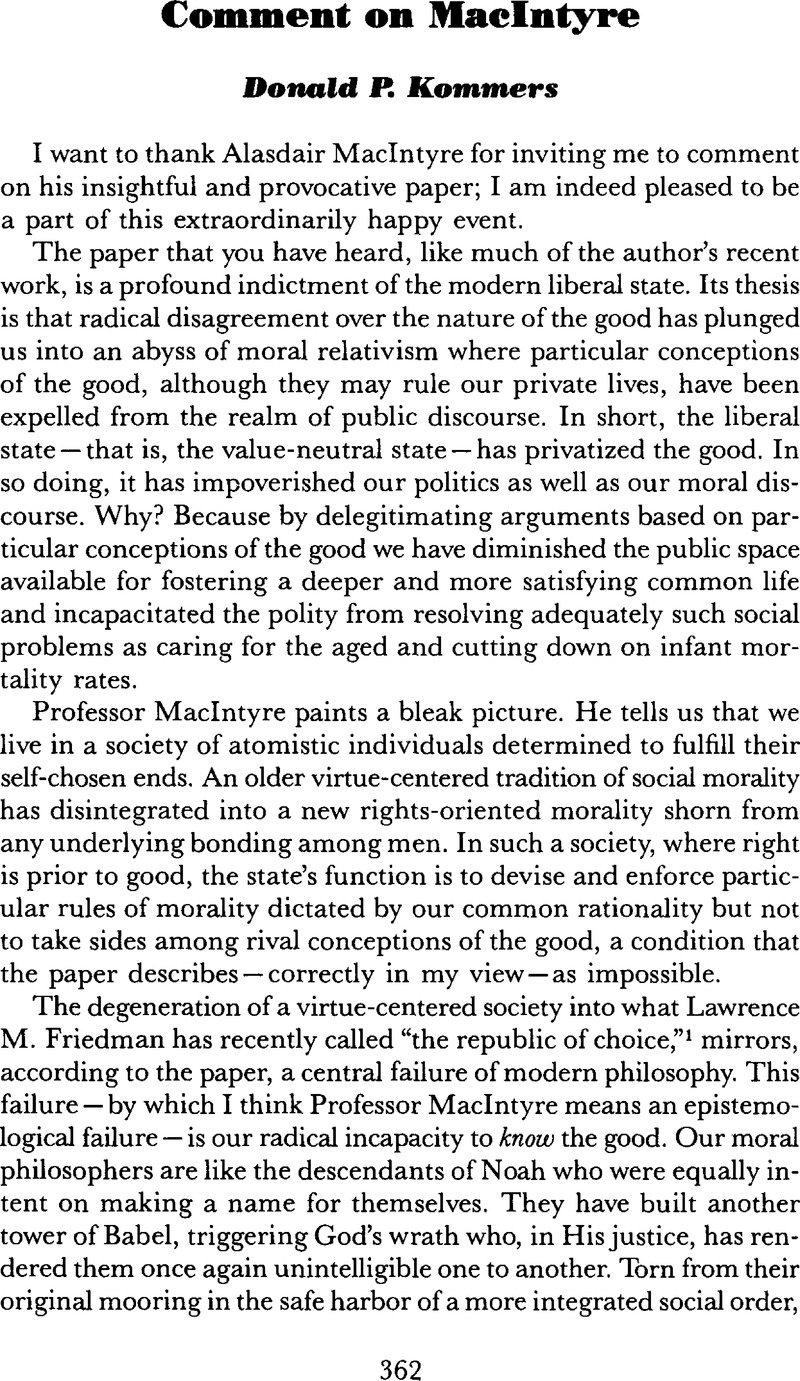Article contents
Comment on MacIntyre
Published online by Cambridge University Press: 05 August 2009
Abstract

- Type
- Article Commentary
- Information
- Copyright
- Copyright © University of Notre Dame 1990
References
Notes
1. The Republic of Choice (Cambridge, MA: Harvard University Press, 1990).Google Scholar
2. 403 U.S. 15, 26 (1971).
3. Ibid., p. 25.
4. Cox, Archibald, The Role of the Supreme Court in American Government (New York: Oxford University Press, 1976), pp. 46–48.Google Scholar
5. Hardwick, Bowers V., 478 U.S. 186, 205 (1986).Google Scholar
6. See Grant, George Parkin, English-Speaking Justice (Notre Dame: University of Notre Dame Press, 1974), pp. 13–47.Google Scholar
7. Perry, Michael J., “Neutral Politics?” Review of Politics 15 (Fall 1989): 481.Google Scholar
8. Stanford v. Kentucky, 106 L Ed 2d 306, 323–324 (1989).
9. Rehnquist, William H., “The Notion of a Living Constitution,” Texas Law Review 54 (05 1976): 704.Google Scholar
10. 105 L Ed 2d 91 (1989).
11. Ibid., p. 117.
12. 406 U.S. 205 (1972).
13. Judgment of 25 February 1975, Entscheidungen des Bundesverfassungsgerichts [Decisions of the Federal Constitutional Court] (hereafter cited as BVerfGE), vol 39 (1975): 1–97. A full translation of this case appears in Jonas, Robert E. and Gorby, John D., “West German Abortion Decision: A Contrast to Roe v. Wade,” The John Marshall Journal of Practice & Procedure (Spring, 1976): 612.Google ScholarPubMed
14. Judgment of 3 June 1980, 54 BVerfGE 208 (1990). For a partial translation of this case see Kommers, Donald P., The Constitutional Jurisprudence of the Federal Republic of Germany (Durham, N.C.: Duke University Press, 1989), pp. 419–22.Google Scholar
15. Ibid., p. 313.
- 1
- Cited by


